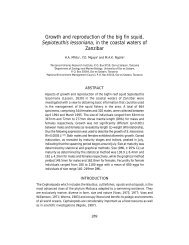gpa_east_africa_case.. - GRID Africa GeoPortal - UNEP
gpa_east_africa_case.. - GRID Africa GeoPortal - UNEP
gpa_east_africa_case.. - GRID Africa GeoPortal - UNEP
You also want an ePaper? Increase the reach of your titles
YUMPU automatically turns print PDFs into web optimized ePapers that Google loves.
employment is the main factor responsible for the higher growth rate in Mombasa. MombasaIsland and town - the focus of the study area - have the highest density of population for thewhole district. The area attracts large migrant population because, in addition to wageemployment opportunities, offers easy access to transport, while the connecting bridge makestransportation to the Central Business District very easy. This stimulated the development ofvast human settlements in housing estates and squatter populations in slum areas.Changamwe Division has also attracted a large population because of the concentration of alarge number of industrial establishments there.Employment. The main source of household income in Mombasa District derives from wageemployment, increasingly in trading and personal services in the “informal sector”. Since the1992, the economy of the country has been performing poorly under the strain of public sectorretrenchments and job freezes. This has stimulated the growth of “informal sector”employment comprising petty businesses, such as street trading, water vending, hawking,small-scale food kiosks and second-hand cloths shops, selling fire, fuel wood and charcoaland other personal services. These activities are mainly concentrated in the town ofMombasa and are typically unrecorded in official statistics. Still, informal sector grown hasbeen lower than the growth of the labour force. It is estimated that in the period 1995 – 2001employment will have to grow by an average of 4.3% annually to absorb the available labourforce, a growth rate very unlikely to be achieved given the prevailing economic circumstancesand the young age-composition of Kenya’s labour force. For instance, those in the 15-24 agebracketaccount for 36% of the total labour force (EAMAT/KO, 1995:4).The labour force was 370,261 in 1997 and is expected to reach 417,469 by the year 2001(Mombasa District Development Plan 1997-2001). Currently, manufacturing accounts for 21%of wage employment, community, social and personal services account for another 32%,while transport and communication for about 21%.Major Industries in Mombasa DistrictIndustryNo. of PlantsBakeries8Cement1Dying6Electricity generation3Fish Processing2Grain Milling8Glass Manufacturing1Iron and Steel7Milk Processing1Non-ferrous12Petroleum Refining1Plastics Manufacture8Roofing felt and adhesives2Soft Drinks2Soap Manufacturing2Textile Manufacturing22Vegetable & animal oils & fats9Total 95Source. Government of Kenya, Ministry of IndustryAverage Income. Analysis of household income for the Coastal Province of the District for1994 shows that Mombasa recorded the highest household per capita income of KenyaShillings 57,011 (about 750 US$), which is mainly due to tourism and related urban wagejobs. Income is not equally distributed. High income is concentrated in a small proportion ofthe urban population while the majority in the rural areas of the District live in poverty. Thepoverty rate of the Coast Province in 1998 was estimated to be at 57%. An income survey byDr. Swazuri in 1999 showed severe income disparities in the population sample of Mombasa.Average annual household income in the affluent areas is Ksh.3, 465,600 (about 45,000 US$)and that in the rural areas of the District such as Mwakirunge was Ksh.86, 210 (1,120 US$).The lowest earned income recorded was Ksh.9, 600 (about 125 US$), while the highest wasKsh.14.4 m (187,000 US$) per year.Final Draft Report – Cost Benefit Case StudiesGPA Strategic Action Plan on Sewage, October, 200071


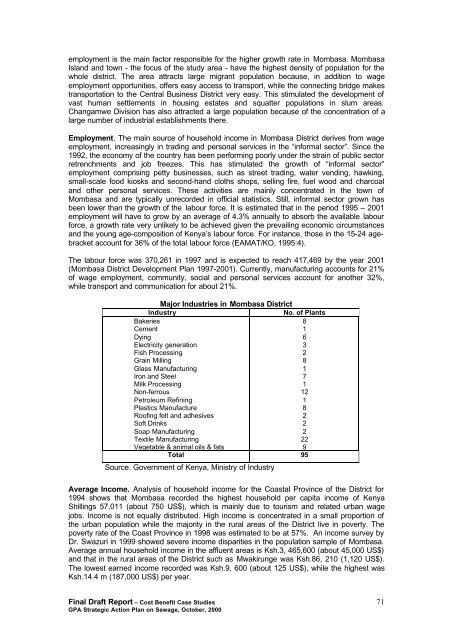
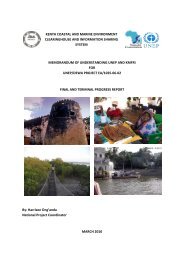

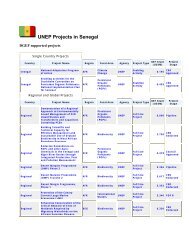

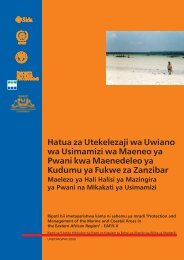
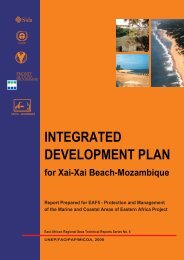

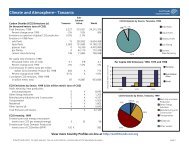

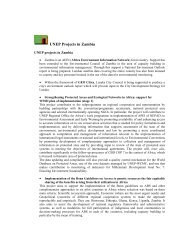
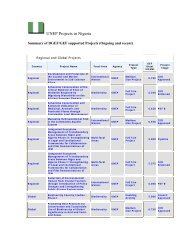
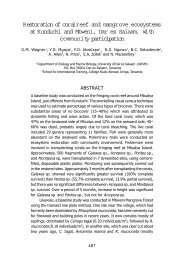
![Please Click to download [English] - GRID Africa GeoPortal - UNEP](https://img.yumpu.com/30633391/1/184x260/please-click-to-download-english-grid-africa-geoportal-unep.jpg?quality=85)
